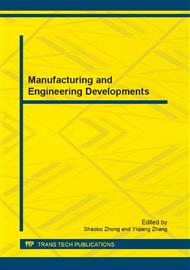p.790
p.796
p.800
p.805
p.810
p.815
p.820
p.826
p.831
Image Enhancement Based on the Minimum Entropy and Rough Sets
Abstract:
The method using the minimum entropy and rough set theory is presented. In the method, the threshold of the gray values of an image is calculated using the minimum value of entropy and an image is divided into some sub-images using the rough set theory. The sub-images are enhanced using different sorts of transforms of gray scale. As an application, the image of high-voltage transmission lines is processed with the presented method. As a contrast, the image is also processed with transformation of histogram equalization. The experimental results show the presented method is more feasible. One of the major characteristics in the presented method is that the threshold is calculated using the minimum value of entropy.
Info:
Periodical:
Pages:
810-814
Citation:
Online since:
January 2013
Authors:
Price:
Сopyright:
© 2013 Trans Tech Publications Ltd. All Rights Reserved
Share:
Citation:


